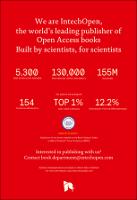Chapter Electrochemistry of Surfactants
Author(s)
CarlosSchulz, Pablo
Patricia Schulz, Erica
Nicolás Schulz, Eduardo
Language
EnglishAbstract
The interaction of light with matter has triggered the interest of scientists for a long time. The area of plasmonics emerges in this context through the interaction of light with valence electrons in metals. The random phase approximation in the long wavelength limit is used for analytical investigation of plasmons in three‐dimensional metals, in a two‐dimensional electron gas, and finally in the most famous two‐dimensional semi‐metal, namely graphene. We show that plasmons in bulk metals as well as in a two‐dimensional electron gas originate from classical laws, whereas quantum effects appear as non‐local corrections. On the other hand, graphene plasmons are purely quantum modes, and thus, they would not exist in a “classical world.” Furthermore, under certain circumstances, light is able to couple with plasmons on metallic surfaces, forming a surface plasmon polariton, which is very important in nanoplasmonics due to its subwavelength nature. In addition, we outline two applications that complete our theoretical investigation. First, we examine how the presence of gain (active) dielectrics affects surface plasmon polariton properties and we find that there is a gain value for which the metallic losses are completely eliminated resulting in lossless plasmon propagation. Second, we combine monolayers of graphene in a periodic order and construct a plasmonic metamaterial that provides tunable wave propagation properties, such as epsilon‐near‐zero behavior, normal, and negative refraction.
Keywords
random phase approximation, graphene, gain dielectrics, plasmonic metamaterialDOI
10.5772/67975Publisher
InTechOpenPublisher website
https://www.intechopen.com/Publication date and place
2017Classification
Condensed matter physics (liquid state & solid state physics)


 Download
Download